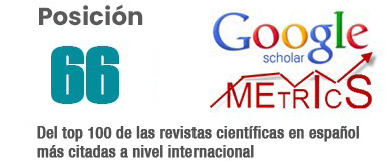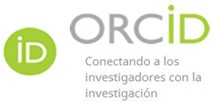Partial hydatidiform mole: a case report
DOI:
https://doi.org/10.62452/p9t7m164Keywords:
Trophoblastic disease, hydatidiform mole, chorionic gonadotropinAbstract
Gestational trophoblastic disease (GTD) is made up of a set of uncommon pathologies associated with pregnancy, ranging from benign to malignant; It has been described as several unusual benign and malignant processes, derived from an abnormal proliferation of the trophoblast of the human placenta, this groups a set of benign lesions such as hydatidiform mole and gestational trophoblastic neoplasia. Hydatidiform mole is a rare obstetric pathology, consisting of an abnormal pregnancy characterized by hydropic degeneration of the chorionic villi and trophoblastic hyperplasia, with a clinical presentation that warrants proper use of available diagnostic tests, especially ultrasound and Doppler , early in pregnancy, to establish its timely diagnosis, which will favorably improve the prognosis; In addition to performing histology, molecular genetic studies would be key to help in the diagnostic pathway. Its treatment of choice is uterine evacuation and strict monitoring with human chorionic gonadotropin (hCG), specifically of β-hCG levels, essential for early diagnosis of gestational trophoblastic neoplasia. High-risk trophoblastic disease (TGD) is treated with multidrug chemotherapy, with or without adjuvant surgery to remove resistant foci of disease, or radiation therapy for brain metastases.
Downloads
References
Coronado, P. J., Marquina, G., Diestro, M., Alonso, S., del Río, A. S., Hardisson, D., Montoliu, G., Santaballa, A., Casado, A., Domingo, S., Gil-Moreno, A., Lubrano, A., & De Santiago, J. (2020). Guía de Asistencia Práctica. Obstet Ginecol, 63(3), 165-184.
Cunningham, F. G., Leveno, K. J., Bloom, S. L., Spong, C. Y., Dashe, J. S., Hoffman, B. L., & Sheffield, J. S. (2014). Williams Obstetrics 24th Edition. Uma ética para quantos? McGraw-Hill Education/Medical.
De Franciscis, P., Schiattarella, A., Labriola, D., Tammaro, C., Messalli, E. M., La Mantia, E., Montella, M., & Torella, M. (2019). A partial molar pregnancy associated with a fetus with intrauterine growth restriction delivered at 31 weeks: a case report. Journal of medical case reports, 13(1), 1-5.
De Vega, C. (1564). De utero hydrope. Liber de arte medendi.
Delgado-Gómez, M., La Hoz-Guerra, D., Sonsoles, M., Alan-Peinado, A., Valverde-Marquez, Á., & Vivas-Vaca, C. (2021). Cáncer diferenciado de tiroides y gestación. Revista ORL, 12(4), 283-302.
DiSaia, P. J., & Creasman, W. T. (2006). The History of Obstetrics and Gynecology, 6. ª edición (en español).
Durón González, R., & Bolaños Morera, P. (2018). Enfermedad trofoblástica gestacional. Medicina Legal de Costa Rica, 35(1), 30-43.
Espinoza Artavia, A., Fernández Vaglio, R., & Solar del Valle, T. (2019). Actualización en patología trofoblástica gestacional: mola hidatiforme y neoplasias. Revista Medica Sinergia, 4(5), 44 - 59.
Galaz-Montoya, C. I., Razo-Aguilera, G., González, P., & Aguinaga-Ríos, M. (2015). Aspectos genéticos de la mola hidatidiforme. Perinatología y reproducción humana, 29(3), 113-117.
Goldstein, D. P., & Berkowitz, R. S. (2012). Current management of gestational trophoblastic neoplasia. Hematology/Oncology Clinics, 26(1), 111-131.
Goldstein, D. P., Berkowitz, R. S., & Horowitz, N. S. (2020). Gestational trophoblastic disease. In, Abeloff's Clinical Oncology. (pp. 1544-1559). Elsevier.
Hertig, A. T. (1956). Tumors of the female sex organs. Part 1. Hydatidiform mole and choriocarcinoma. Atlas of tumor pathology, Section-IX. https://cir.nii.ac.jp/crid/1571417124684004224
Hui, P., Buza, N., Murphy, K. M., & Ronnett, B. M. (2017). Hydatidiform moles: genetic basis and precision diagnosis. Annual Review of Pathology: Mechanisms of Disease, 12, 449-485.
Jagtap, S. V., Aher, V., Gadhiya, S., & Jagtap, S. S. (2017). Gestational trophoblastic disease-Clinicopathological study at tertiary care hospital. Journal of Clinical and Diagnostic Research: JCDR, 11(8).
Ngan, H. Y., Seckl, M. J., Berkowitz, R. S., Xiang, Y., Golfier, F., Sekharan, P. K., Lurain, J., & Massuger, L. (2018). Update on the diagnosis and management of gestational trophoblastic disease. International Journal of Gynecology & Obstetrics, 143, 79-85.
Ngan, S., & Seckl, M. J. (2007). Gestational trophoblastic neoplasia management: an update. Current opinion in oncology, 19(5), 486-491.
Nguyen, N. M. P., & Slim, R. (2014). Genetics and epigenetics of recurrent hydatidiform moles: basic science and genetic counselling. Current obstetrics and gynecology reports, 3(1), 55-64.
Ning, F., Hou, H., Morse, A. N., & Lash, G. E. (2019). Understanding and management of gestational trophoblastic disease. F1000Research, 8.
Oróstegui, S., Arenas, Y. A., & Galindo, L. M. (2008). Enfermedad trofoblástica gestacional. MedUNAB, 11(2), 140–148.
Seckl, M. J., Sebire, N. J., & Berkowitz, R. S. (2010). Gestational trophoblastic disease. The Lancet, 376(9742), 717-729.
Smith, H. O. (2003). Gestational trophoblastic disease epidemiology and trends. Clinical Obstetrics and Gynecology, 46(3), 541-556.
Soper, J. T. (2021). Gestational trophoblastic disease: current evaluation and management. Obstetrics and Gynecology, 137(2), 355-370.
Tse, K. Y., Chan, K. K., Tam, K. F., & Ngan, H. Y. (2015). Current management of gestational trophoblastic disease. Obstetrics, Gynaecology & Reproductive Medicine, 25(1), 12-21.
Vimercati, A., de Gennaro, A. C., Cobuzzi, I., Grasso, S., Abruzzese, M., Fascilla, F. D., ... & Selvaggi, L. (2013). Two cases of complete hydatidiform mole and coexistent live fetus. Journal of prenatal medicine, 7(1), 1-4.
Weed, J. C., & Hammond, C. B. (1980). Cerebral metastatic choriocarcinoma: intensive therapy and prognosis. Obstetrics and Gynecology, 55(1), 89-94.
Zeng, C., Chen, Y., Zhao, L., & Wan, B. (2019). Partial hydatidiform mole and coexistent live fetus: a case report and review of the literature. Open Medicine, 14(1), 843-846.
Zhang, R. Q., Zhang, J. R., & Li, S. D. (2019). Termination of a partial hydatidiform mole and coexisting fetus: A case report. World Journal of Clinical Cases, 7(20).
Downloads
Published
Issue
Section
License
Copyright (c) 2023 Graciela de Jesús Cabrera-Miñán, Carmen Victoria Guerrero-Jiménez, Nohelia Maricela Feijóo-Villa (Autor/a)

This work is licensed under a Creative Commons Attribution-NonCommercial-ShareAlike 4.0 International License.
Authors who publish in Revista Metropolitana de Ciencias Aplicadas (REMCA), agree to the following terms:
1. Copyright
Authors retain unrestricted copyright to their work. Authors grant the journal the right of first publication. To this end, they assign the journal non-exclusive exploitation rights (reproduction, distribution, public communication, and transformation). Authors may enter into additional agreements for the non-exclusive distribution of the version of the work published in the journal, provided that acknowledgment of its initial publication in this journal is given.
© The authors.
2. License
The articles are published in the journal under the Creative Commons Attribution-NonCommercial-ShareAlike 4.0 International License (CC BY-NC-SA 4.0). The terms can be found at: https://creativecommons.org/licenses/by-nc-sa/4.0/deed.en
This license allows:
- Sharing: Copying and redistributing the material in any medium or format.
- Adapting: Remixing, transforming, and building upon the material.
Under the following terms:
- Attribution: You must give appropriate credit, provide a link to the license, and indicate if any changes were made. You may do this in any reasonable manner, but not in any way that suggests the licensor endorses or sponsors your use.
- NonCommercial: You may not use the material for commercial purposes.
- ShareAlike: If you remix, transform, or build upon the material, you must distribute your creation under the same license as the original work.
There are no additional restrictions. You may not apply legal terms or technological measures that legally restrict others from doing anything the license permits.




